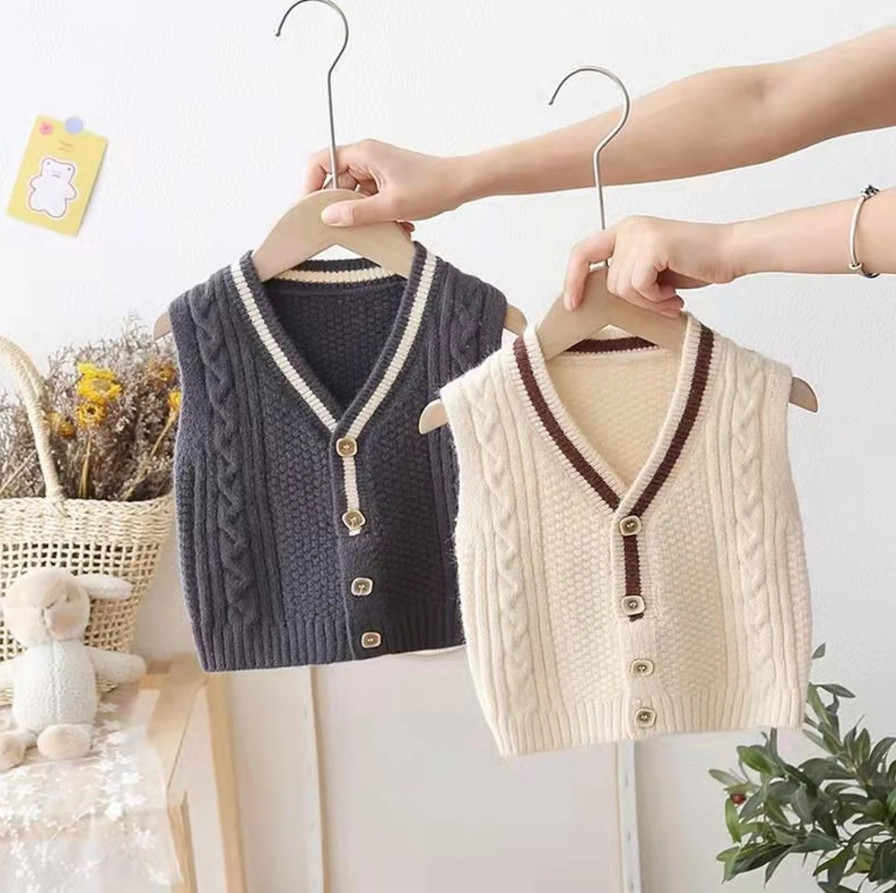The Best Fabrics for Toddler Cardigans: A Guide for Parents
Introduction
As a parent, you know that dressing your toddler is not just about style but also about comfort and safety. Toddler cardigans are a must-have in any young child's wardrobe. They are versatile, comfortable, and can be worn in any season. But how do you choose the right fabric for your little one's cardigan? The options can be overwhelming. That's why we've put together this comprehensive guide to help you make an informed decision.
In this blog, we will delve into the best fabrics for toddler cardigans, discussing their benefits and how to choose the right one for your child. We'll also provide some great options available in our store to make your shopping experience easier.
Table of Contents
Cotton: The All-Rounder
Why Choose Cotton?
Cotton is often the go-to fabric for toddler clothing, and for good reason. It's soft, breathable, and incredibly easy to care for. If you're looking for a cardigan that your toddler can wear year-round, cotton is an excellent choice.
Benefits of Cotton
Softness: Cotton is soft to the touch, making it comfortable for your toddler to wear for extended periods.
Breathability: The fabric allows for good air circulation, which helps to remove and absorb body moisture, drawing heat away from the skin.
Hypoallergenic: Cotton is a natural fiber that doesn't irritate the skin, making it a great choice for children with sensitive skin.
Cotton in Different Seasons
Cotton is versatile enough to be worn in all seasons. For the summer months, a lightweight cotton cardigan can provide a layer of protection against the sun without causing your child to overheat. In the colder months, a heavier cotton cardigan can provide warmth without causing your toddler to sweat excessively.
How to Care for Cotton
Cotton is relatively easy to care for. It can withstand high temperatures, so you can machine wash it in warm water. It also dries quickly, making it convenient for busy parents.
Wool: The Winter Warrior
Why Choose Wool?
When the temperature drops, you'll want to keep your toddler warm and cozy. Wool is a fantastic option for this. Not only does it provide excellent insulation, but it also has some unique properties that make it a safe choice for children.
Benefits of Wool
Warmth: Wool fibers have a natural crimp that traps air, providing excellent insulation.
Water-Repellent: Wool has a natural ability to wick moisture away, keeping your child dry.
Flame-Resistant: Unlike some synthetic materials, wool is naturally flame-resistant, adding an extra layer of safety.
Wool in Different Seasons
While wool is often associated with winter, lightweight wool can also be worn in warmer months. Merino wool, for example, is known for its ability to regulate body temperature, making it a versatile choice.
How to Care for Wool
Wool requires a bit more care than cotton. It's best to hand wash wool items in cold water to prevent shrinking. Lay them flat to dry to maintain their shape.
Cashmere: The Luxurious Choice
Why Choose Cashmere?
Cashmere is often considered the epitome of luxury when it comes to fabrics. But did you know it's also an excellent choice for toddler cardigans? Cashmere is not just soft and warm; it's also lightweight and hypoallergenic, making it a great choice for children with sensitive skin.
Benefits of Cashmere
Softness: Cashmere is incredibly soft, providing a luxurious feel against the skin.
Warmth: Despite its lightweight nature, cashmere offers excellent insulation.
Hypoallergenic: Like cotton, cashmere is hypoallergenic, making it suitable for toddlers with sensitive skin.
Cashmere in Different Seasons
Cashmere can be a year-round fabric if chosen wisely. Lighter weaves can be perfect for spring and fall, while heavier knits are ideal for winter.
How to Care for Cashmere
Cashmere requires special care to maintain its luxurious quality. Hand wash in cold water with a gentle detergent and lay flat to dry. Store it folded rather than hanging to maintain its shape.
Fleece: The Practical Pick
Why Choose Fleece?
Fleece is a synthetic fabric that has gained popularity for its warmth and ease of care. It's a great choice for active children who are always on the move.
Benefits of Fleece
Warmth: Fleece is warm and insulating, making it ideal for colder months.
Lightweight: Despite its warmth, fleece is a lightweight fabric, allowing for easy movement.
Easy to Care: Fleece is machine washable and dries quickly.
Fleece in Different Seasons
Fleece is primarily a fabric for colder months, but lighter versions can be used for chilly summer evenings.
How to Care for Fleece
Fleece is perhaps the easiest fabric to care for on this list. It's machine washable and dries quickly, making it a practical choice for busy parents.
Bamboo: The Eco-Friendly Option
Why Choose Bamboo?
In recent years, bamboo has emerged as a sustainable alternative to traditional fabrics. It's not just eco-friendly; it's also soft, breathable, and hypoallergenic.
Benefits of Bamboo
Softness: Bamboo fabric is incredibly soft, rivaling even cashmere and cotton.
Breathability: Like cotton, bamboo is breathable and wicks moisture away from the skin.
Eco-Friendly: Bamboo is a sustainable resource, making it an eco-conscious choice.
Bamboo in Different Seasons
Bamboo's breathability makes it a versatile fabric that can be worn year-round. Its moisture-wicking properties are especially useful in hot, humid climates.
How to Care for Bamboo
Bamboo is relatively easy to care for. It can be machine washed in cold water and tumble dried on a low setting.
How to Choose the Right Fabric
Comfort Considerations
When it comes to your toddler's comfort, the fabric's softness and breathability are paramount. Cotton and bamboo excel in this department, but cashmere offers a touch of luxury.
Seasonal Selection
The season plays a significant role in fabric choice. Wool and fleece are excellent for winter, while cotton and bamboo are better suited for warmer months.
Ease of Care
With toddlers, you can expect frequent spills and stains. Fabrics like cotton and fleece are easy to care for, making them practical choices for everyday wear.



